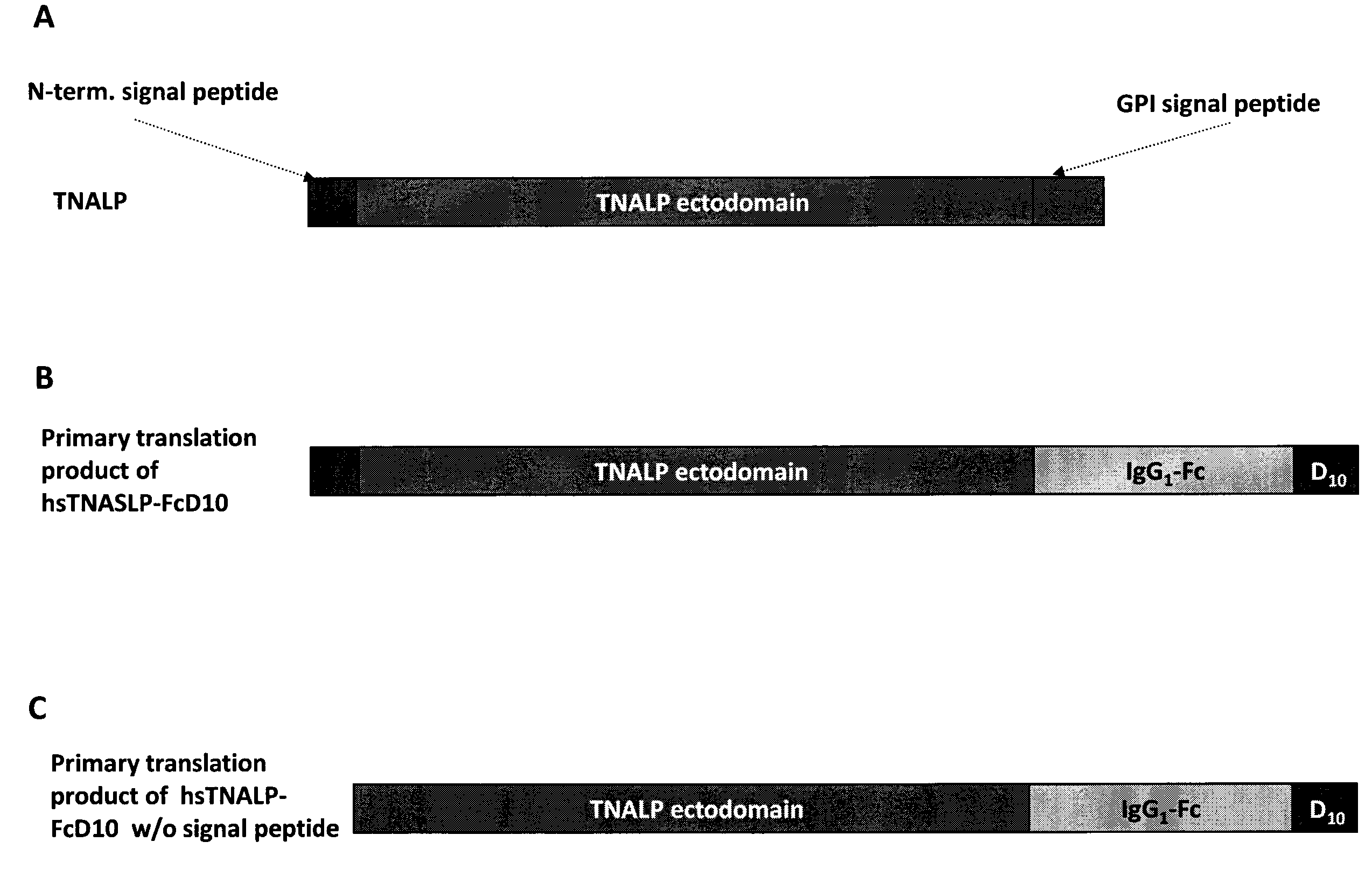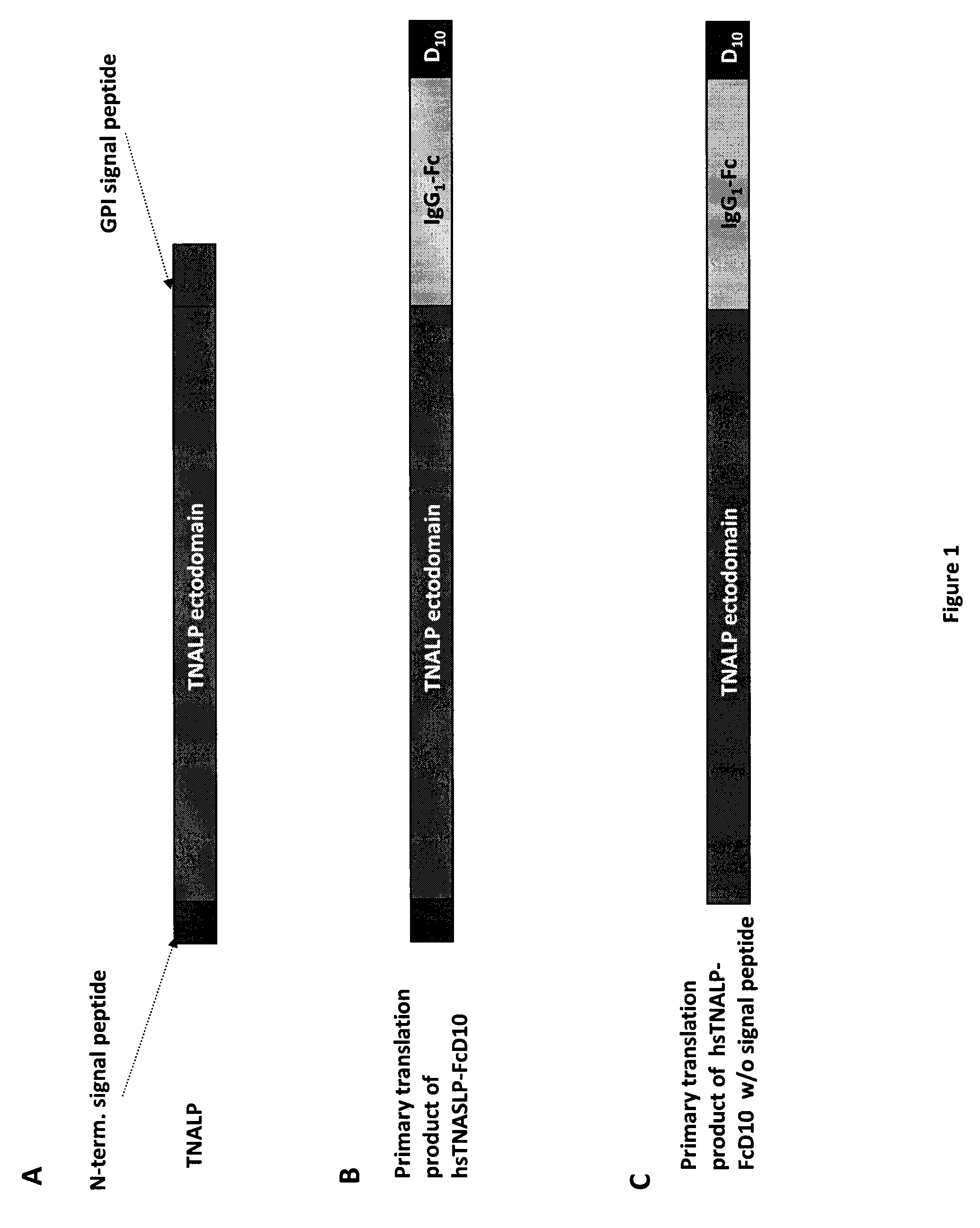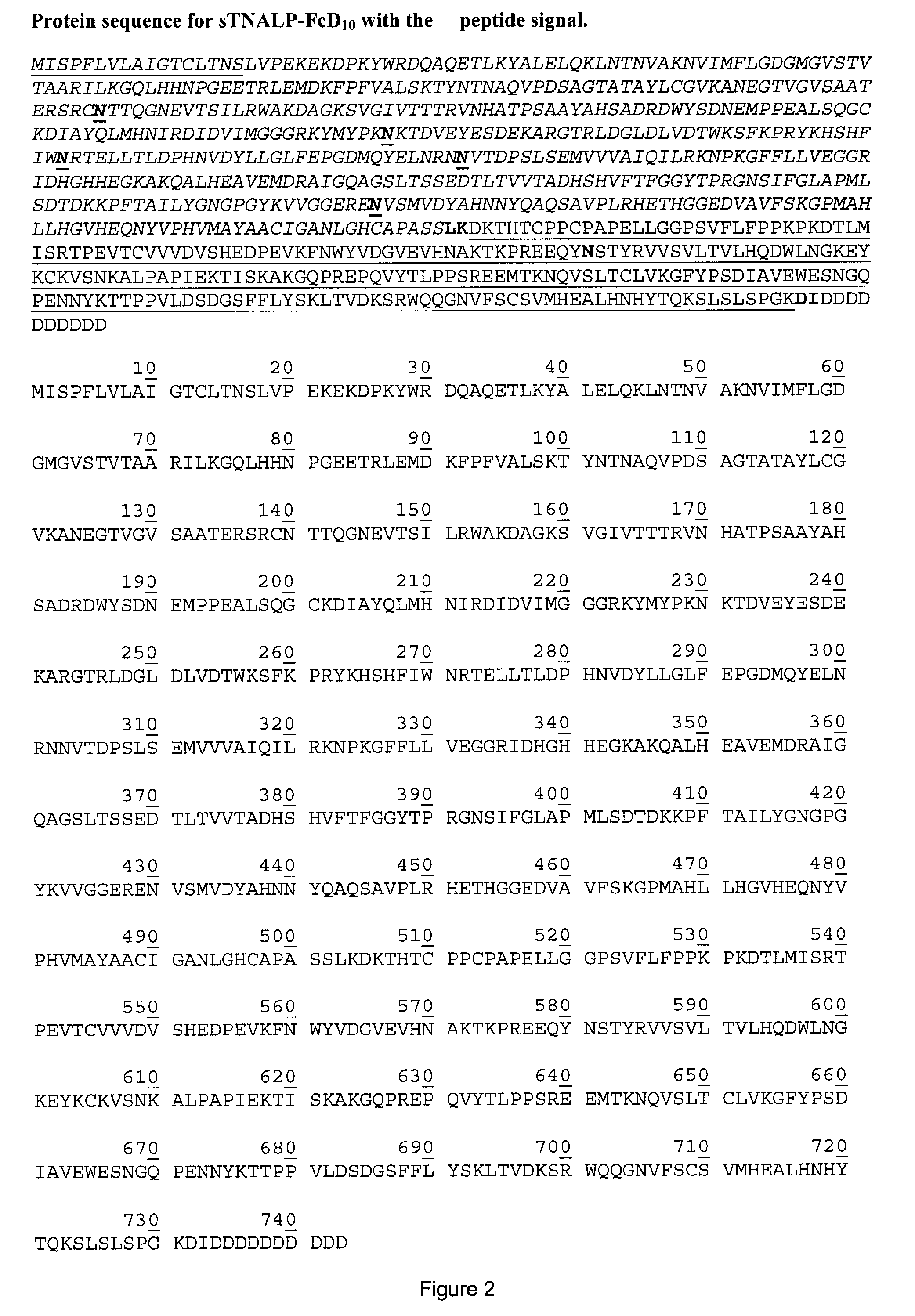Bone targeted alkaline phosphatase, kits and methods of use thereof
a technology of alkaline phosphatase and kits, which is applied in the direction of fusions for specific cell targeting, antibody medical ingredients, peptide/protein ingredients, etc., can solve the problems of no established medical therapy for hpp and increased respiratory compromis
- Summary
- Abstract
- Description
- Claims
- Application Information
AI Technical Summary
Benefits of technology
Problems solved by technology
Method used
Image
Examples
example 1
Expression and Purification of Recombinant sTNALP-FcD10
[0123]In order to facilitate the expression and purification of recombinant TNALP, the hydrophobic C-terminal sequence that specifies GPI-anchor attachment in TNALP was eliminated to make it a soluble secreted enzyme (Di Mauro et al. 2002). The coding sequence of the TNALP ectodomain was also extended with the Fc region of the human IgG (γ1 form (IgG1), Swiss-Prot P01857). This allowed rapid purification of the recombinant enzyme on Protein A chromatography and surprisingly, its increased expression. Furthermore, to target the recombinant TNALP to bone tissue, a deca-aspartate (D10) sequence was attached to the C-terminal of the Fc region. This chimeric form of TNALP, designated sTNALP-FcD10, retains full enzymatic activity both when assayed at pH 9.8 using the artificial substrate p-nitrophenylphosphate and when assayed at pH 7.4 using inorganic pyrophosphate (PPi), as the physiological substrate. As in the naturally occurring ...
example 2
Comparative Expression of sTNALP-D10 and sTNALP-FcD10
[0130]Plasmid vectors encoding either sTNALP-FcD10 or sTNALP-D10 were transfected in CHO-DG44 cells using Lipofectamine™ and grown in selective media (i.e. devoid of nucleotides) designed to promote survival of cells expressing the DHFR gene as described in Example 1 above. Stable transfectants were isolated by plaque cloning and ranked according to their level of protein expression using the alkaline phosphatase enzymatic assay also described in Example 1 above. Screening allowed the identification of one clone only for sTNALP-D10 (0.120 pg / cell / day) and five clones for sTNALP-FcD10 (0.377, 0.258, 0.203, 0.099 and 0.088 pg / cell / day). Methotrexate (MTX) gene amplification was performed as described in Example 1 above (MTX ranging from 0 to 100 mM) and allowed an 8-fold expression increase for sTNALP-FcD10 while no amplification was observed with the sTNALP-D10 cultures (see FIG. 4). Using a similar process for cell line developmen...
example 3
sTNALP-FcD10 Characterization
[0131]sTNALP-FcD10 was first purified on Protein-A Sepharose™ and was analyzed on SDS-PAGE under reducing and non-reducing conditions.
[0132]Under reducing conditions, it migrated as a broad band with an apparent molecular mass of ˜90,000 Da (DTT+ in FIG. 5). Digestion with peptide N-Glycosidase F (PNGAse F) reduced the apparent molecular mass of the protein to about 80,000 which closely approximates the calculated mass of 80,500 Da for the non-glycosylated sTNALP-FcD10 monomer shown in FIG. 1. Soluble TNALP in serum, like TNALP present as a GPI anchored protein on the outer surface of osteoblasts, is a highly glycosylated protein with carbohydrates comprising ≦20% of the total mass of the enzyme (Farley & Magnusson 2005). Although the specific carbohydrate structures on TNALP have not been identified, sequence studies indicate that the enzyme possesses five putative sites for N-linked glycosylation, and biochemical studies have shown evidence for both N-...
PUM
| Property | Measurement | Unit |
|---|---|---|
| half-life time | aaaaa | aaaaa |
| half-life time | aaaaa | aaaaa |
| temperature | aaaaa | aaaaa |
Abstract
Description
Claims
Application Information
 Login to View More
Login to View More - R&D
- Intellectual Property
- Life Sciences
- Materials
- Tech Scout
- Unparalleled Data Quality
- Higher Quality Content
- 60% Fewer Hallucinations
Browse by: Latest US Patents, China's latest patents, Technical Efficacy Thesaurus, Application Domain, Technology Topic, Popular Technical Reports.
© 2025 PatSnap. All rights reserved.Legal|Privacy policy|Modern Slavery Act Transparency Statement|Sitemap|About US| Contact US: help@patsnap.com



